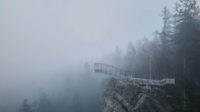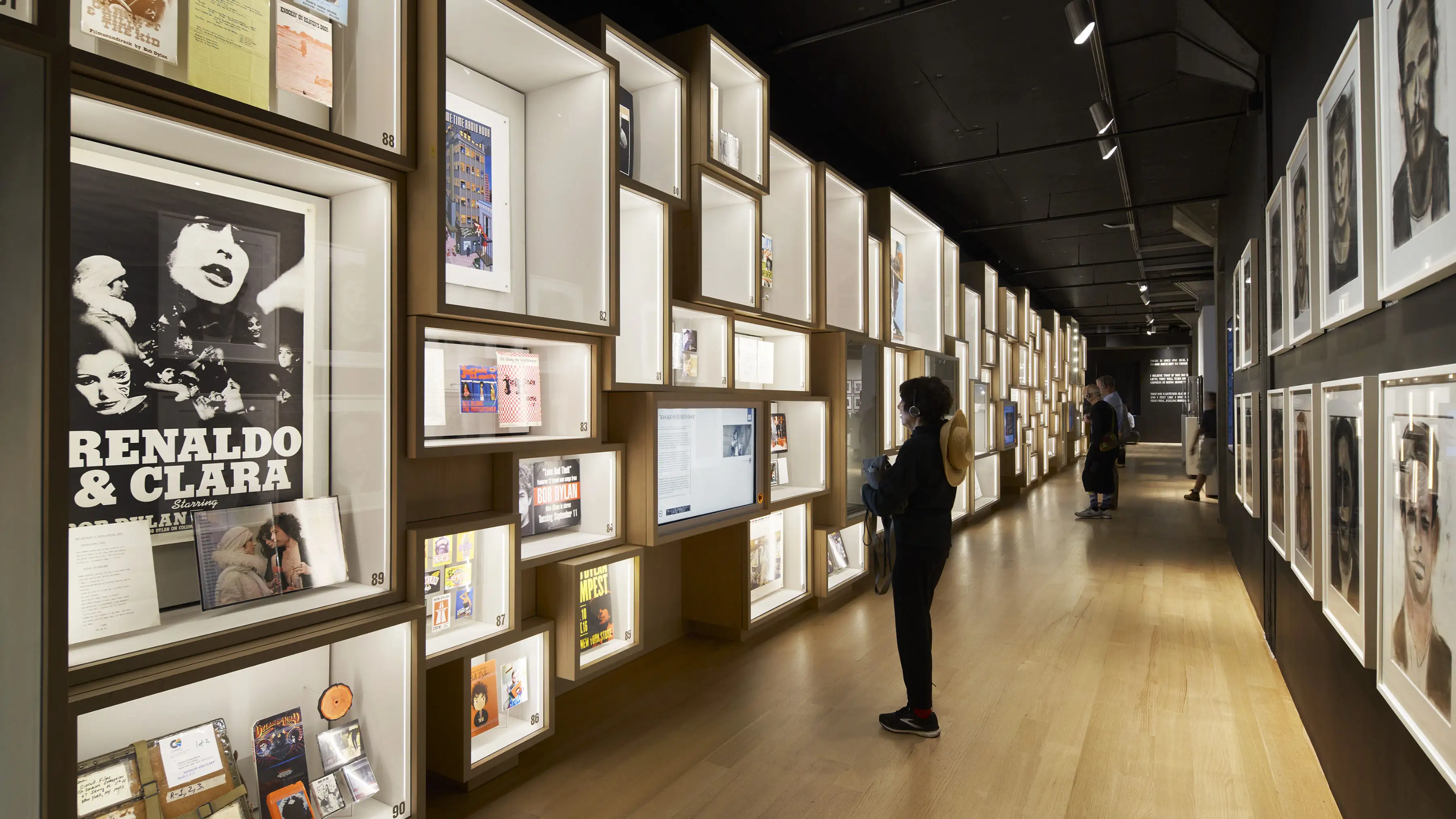The Bob Dylan Center in Tulsa Celebrates the Creative Process, Past and Present

Opened in May, the Bob Dylan Center is located in the burgeoning arts center of Tulsa, just steps away from the Woody Guthrie Center. Photo © Matthew Millman
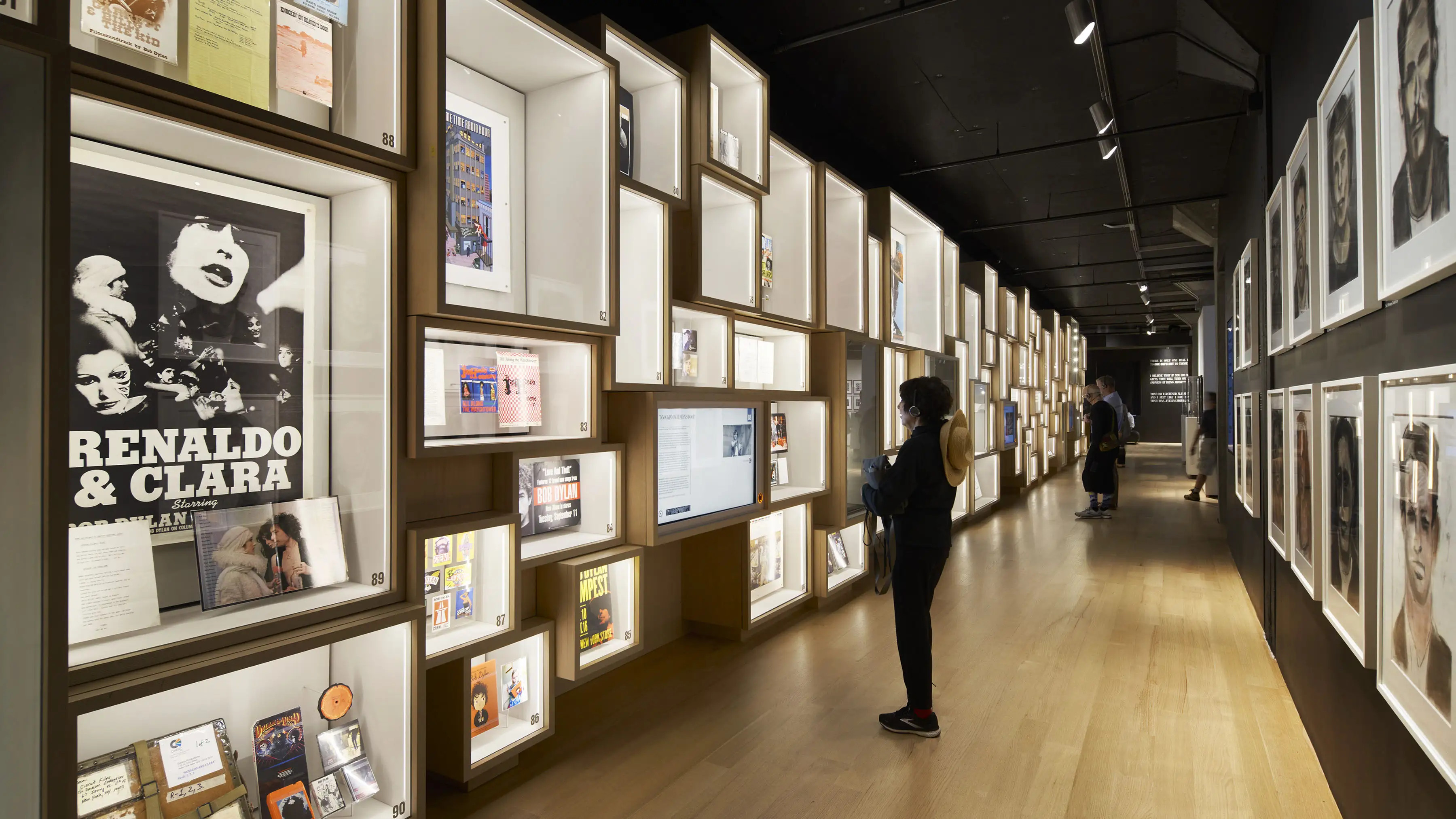
Selected items from the Bob Dylan Archives are displayed on a two-sided gallery wall. Photo © Matthew Millman

Bob Dylan on stage in 1974. Photo © Barry Feinstein
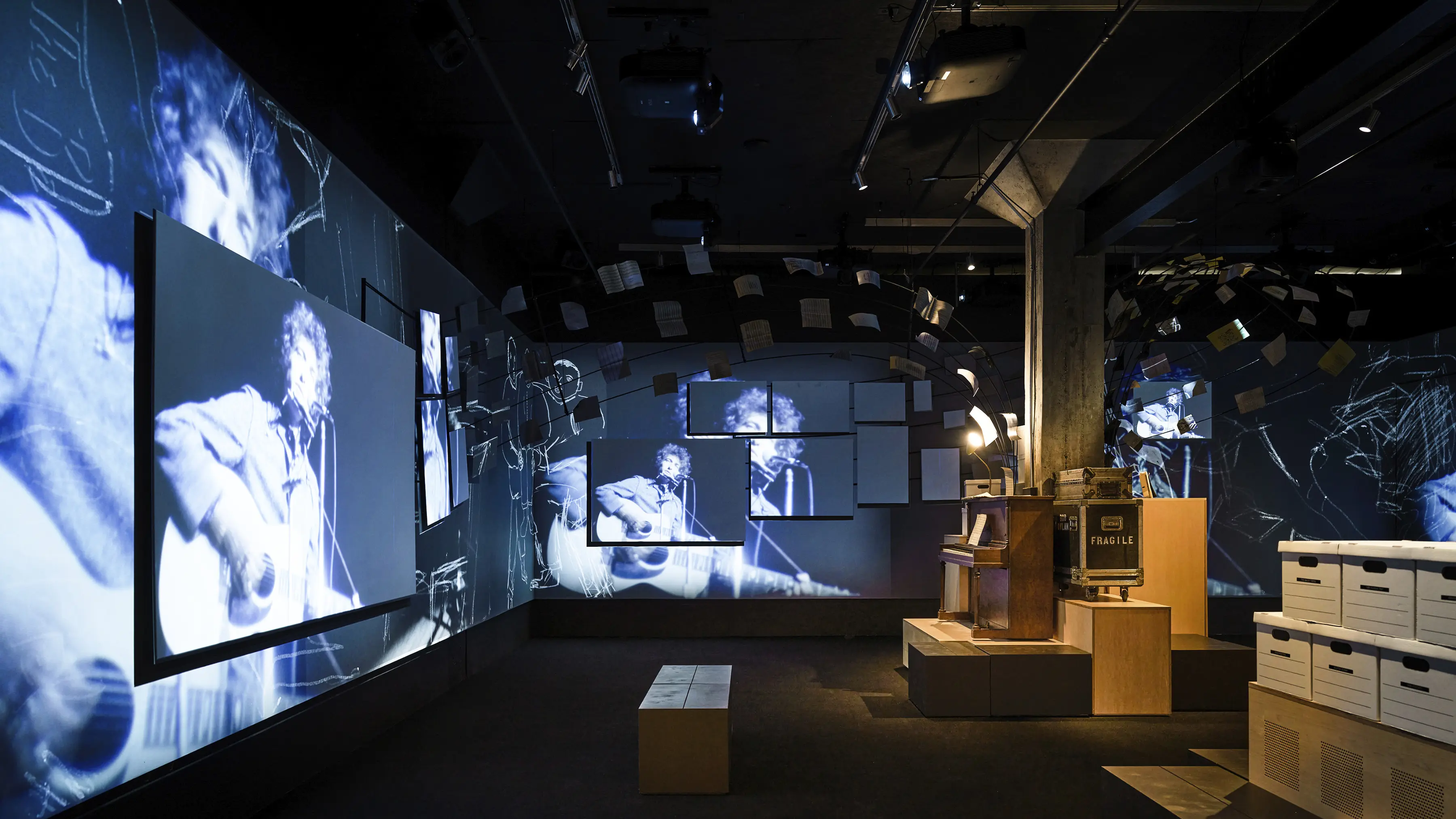
Archival footage compiled by filmmaker Jennifer Lebeau in an exhibition room. Photo © Matthew Millman
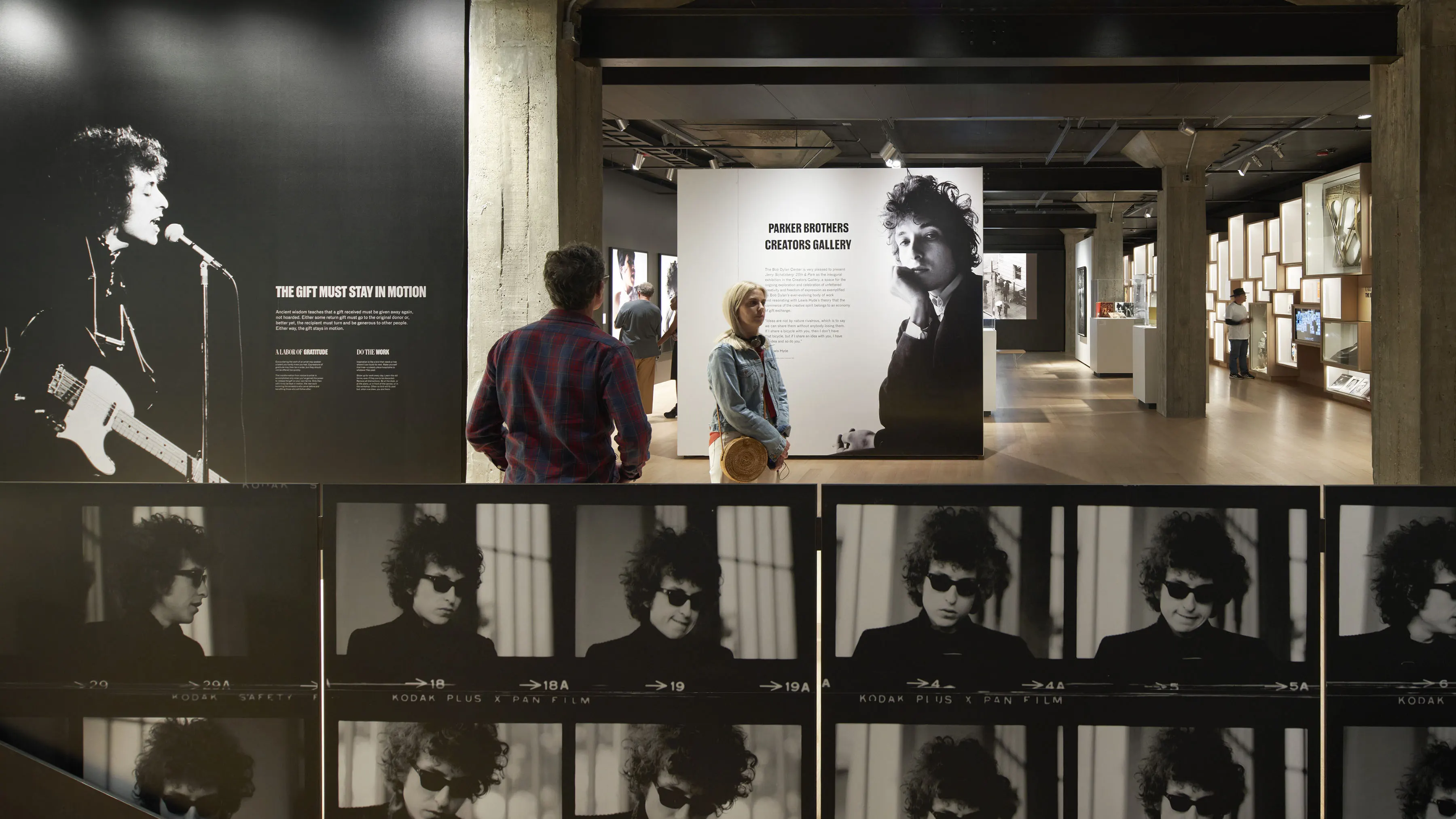
Photo © Matthew Millman
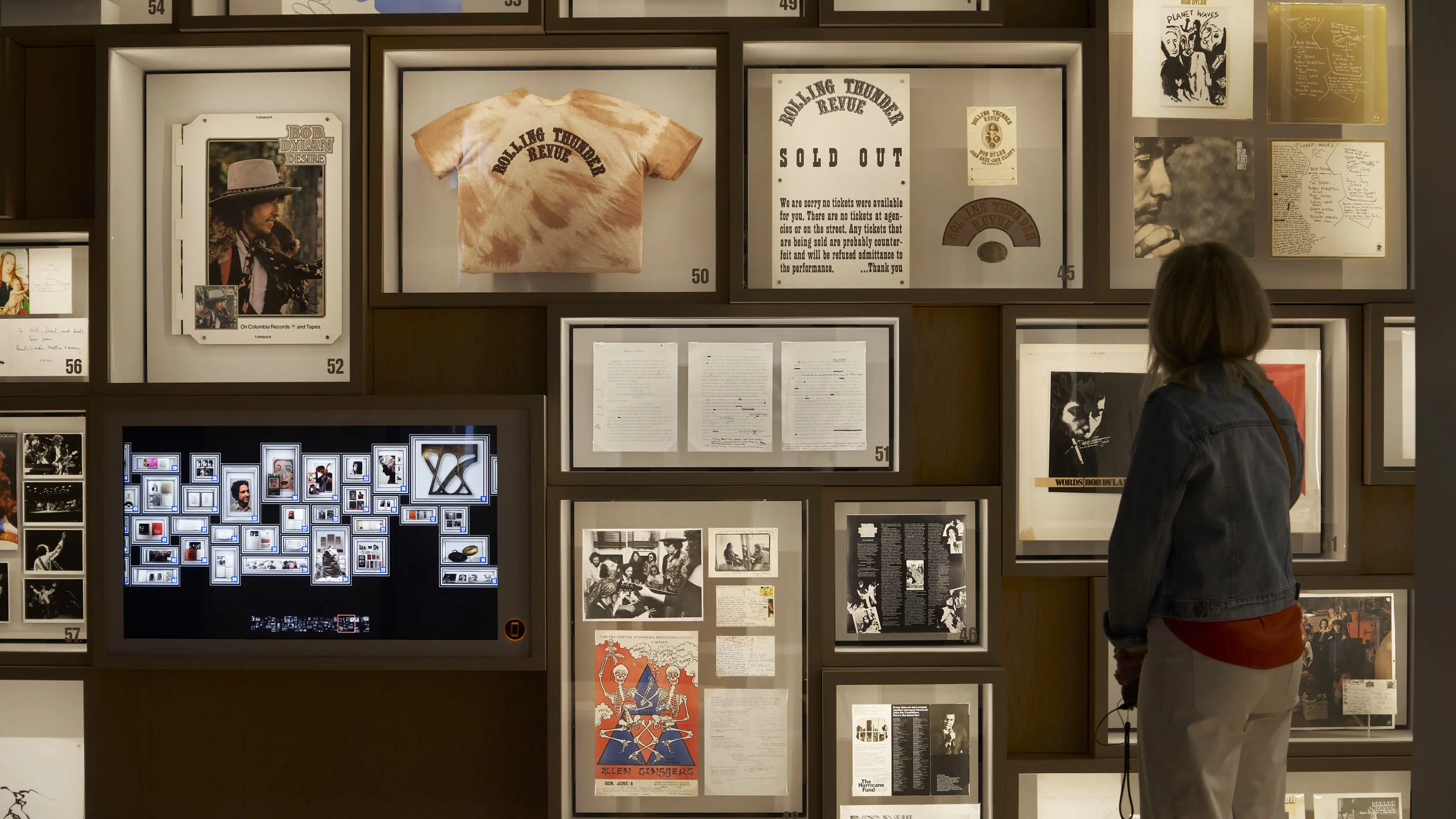
Photo © Mark Millman






Architects & Firms
“Life is more or less a lie, but then again that's exactly the way we want it to be,” wrote Bob Dylan in his 2011 memoir Chronicles: Volume One. A casual relationship to the truth has marked the musician’s nearly seven-decade career; Dylan is known for being as elusive as he is prolific, rarely granting interviews to the press and intentionally keeping the details of his life and background murky. When Olson Kundig was awarded the design of the new Bob Dylan Center in Tulsa, Oklahoma in 2018, Kundig’s principal Alan Maskin faced the challenge of encapsulating the creative life and legacy of a public figure famous for muddying the line between fact and fiction.

Dylan in 1962. Photo © John Cohen
A five-year project, the Center opened in May. Dylan was not in attendance (and is not formally involved with the project) but his creative compatriots Elvis Costello, Patti Smith, and Mavis Staples performed live on the opening weekend. The 17,500 square-foot brick building, a 100-year-old former paper factory now adorned with a mural of Dylan by artist Erik T. Burke, is located in the center of the burgeoning arts district of Tulsa, just steps away from the Woody Guthrie Center. Both Dylan’s and Guthrie’s archives are owned by the Tulsa-based George Kaiser Family Foundation—which is the short answer to the often-asked question, “why Tulsa?” about the center’s chosen home.
The Bob Dylan Archive—which contains more than 100,000 items, including manuscripts, photographs, correspondences, and original studio recordings—are housed in the new center, but the repository is open only to qualified researchers and scholars. However, Maskin and his team selected 94 items from the archives for display on a linear, two-sided gallery wall. Among them is a bag of unopened mail that Dylan received from fans after his mysterious 1966 motorcycle accident in Woodstock, the alleged cause of the singer’s nearly eight-year withdrawal from touring and public life. Also on display are the rare “Blood Notebooks,” in which Dylan scribbled out the bones of what would become his acclaimed 1975 album Blood on the Tracks.

1

2
(1) A gate welded by Dylan at the entrance to the Bob Dylan Center; (2) The Blood Notebooks on display. Photos © Matthew Millman
"This was never going to be a monument to a rockstar,” says Maskin, whose repertoire includes a number of museum projects, including the Bay Area Discovery Museum and the Holocaust Center for Humanity in Seattle. “I was interested in this project as a living archive,” he says. Instead of assembling a team of seasoned museum curators to design the 22,000 square feet of exhibition space, Maskin gathered artists who represent a vast swath of creative pursuits—all with a particular relationship to Dylan. Among them are musicians Elvis Costello and Rosanne Cash, filmmaker Jennifer Lebeau, historian Sean Wilentz, U.S. Poet Laureate Joy Harjo, essayist Lewis Hyde, and actor Kimber Elayne Sprawl, currently starring in Dylan-scored musical, Girl From the North Country, on Broadway.
The idea was to create a portrait of Dylan through a “cubist” approach, says Maskin, citing the influence of Akira Kurosawa’s 1950 film Rashomon, in which various perspectives are stitched together to tell the story of a murder.
Lebeau, who produced and directed the documentary, Bob Dylan: Trouble No More (2017), put together a selection of archival performance footage for an immersive film experience, on display in the center’s first room. Costello's contribution, a curated jukebox with 152 songs, includes a selection of Dylan’s tracks, in addition to those by musicians who influenced him—Buddy Holly, Woody Guthrie, Chuck Berry—and more contemporary Dylan covers from the likes of the Fleet Foxes and Adele. The center’s reading room echoes the boundary-less nature of creative influence with a literature collection chosen by Harjo which includes writings by or about Dylan, as well as by those who inspired him and whom he inspired.

1

2
(1) A visitor listening to the 1964 song "Chimes of Freedom" as they learn about the history of its production; (2) Costello's jukebox. Photo © Matthew Millman
In February, Harjo was named the center’s first artist-in-residence. The poet, a Tulsa native, will spend the next six years presenting educational programs and giving live performances, as well as curating special exhibitions for the center. One gallery in the center is dedicated to rotating exhibitions by other artists; currently on display is the work of filmmaker and photographer Jerry Schatzberg, who shot the cover of Blonde on Blonde.
The approach of the Bob Dylan Center, says Maskin, can be summed up in a Dylan quote painted on the entrance to the exhibitions: “Life isn’t about finding yourself or finding anything. Life is about creating yourself and creating things.” Rather than memorializing a public figure in ink and concrete, the center dedicates itself to the creative process at large, as Dylan himself has done.



